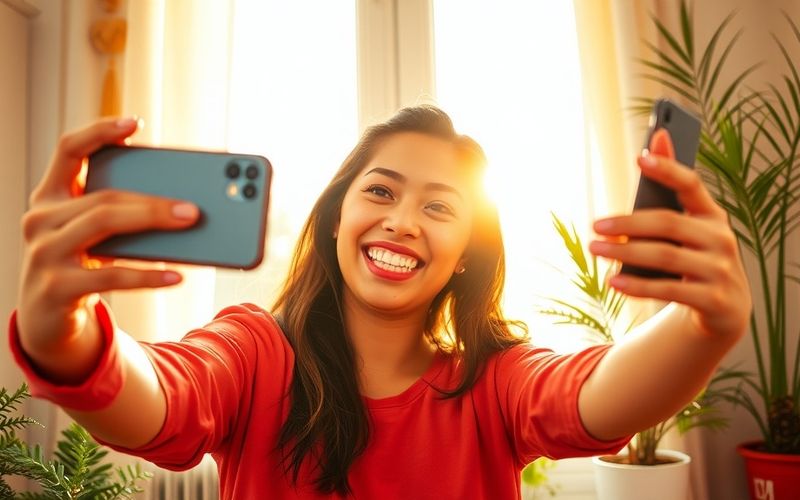While I wouldn't categorize myself as a passionate selfie enthusiast, there is a pressing reality that my parents reside far away, prompting their frequent requests for recent photos. Understandably, any subpar image often ignites their concern, which has propelled me to delve into the art of capturing selfies that are worthy of sharing online or sending to loved ones.
One common piece of advice from selfie experts recommends slightly lowering your chin to avoid it standing out excessively and to enhance the appearance of your eyes. However, I’ve discovered that for me, this leads to unsightly neck folds and an unflattering second chin, making my face look puffy and less appealing. Instead of retreating from the camera, it is far more effective to elongate my neck, subtly tilt my chin, and rotate my head to the side. Notably, capturing the image while inhaling rather than exhaling can assist in achieving this pose as it naturally tightens the body for a more flattering silhouette. Adopting this technique was initially challenging; I felt as if I were stretching my head out from its shell akin to a turtle striving for sunlight.
Lighting is undeniably critical in selfie photography. The ideal scenario involves finding a natural light source that facilitates a fresh, glowing complexion. Using artificial light from lamps typically casts an unflattering yellowish hue on the skin. Therefore, positioning myself in front of a sunlit window is imperative—just ensure I’m facing it directly, as a sideways position results in harsh shadows marring my face. Evening photos require an approach as well; it's advisable to choose a light source at face level for optimal illumination since overhead lights, such as chandeliers, can cruelly accentuate skin imperfections.
As I explore the intricacies of selfie composition, I've noted that bringing the camera too close to my face leads to distorted proportions—my cheeks, chin, and nose appear grossly exaggerated while my neck seems to vanish. In absence of a selfie stick or tripod, it’s advisable to hold the phone at arm's length, allowing flexibility to later crop the photo for a more favorable frame. For those wielding heavier devices, propping the phone against a shelf or













